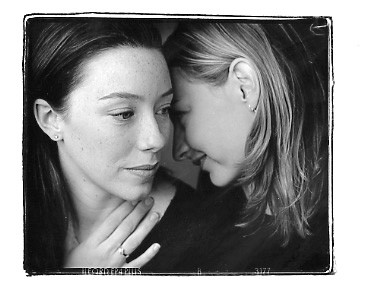[Ed.
Boot Camp Instincts was first published in Ripe
Magazine, Issue 2.]
Every
month, sometimes every couple of weeks, I take the best photograph
of my life. We photographers share an anxiety with 19th century
American gunslingers: if our shot isn't good enough we are dead.
If we rest in our laurels boot hill awaits.
Every moment, every exposure in photography precedes
intense training. Boot camp teaches soldiers to forget their instinct
for self-preservation. When they are ordered to advance into enemy
gunfire they do not flinch. Photographic basic training helped
me on September 24, 2000. I took a picture I have never topped.
We are born, we grow, mature, age and we die.
Life holds us to that inescapable pattern unless we die young.
An inescapable pattern haunts photographers,
too. In I962 I was 20 and living in Mexico City. A German friend
and I would go on shooting sprees. We loaded our Pentaxes, Pentacons
and Edixas with Tri-X or Agfa Isopan Record, a film that could
be pushed to 1200. We eschewed filters since we did not believe
in modifying what we saw. We were too young and ignorant to know
of the blue sensitivity of b w panchromatic film. We photographed
native Mexican women in markets with their piles of exquisitely
ordered oranges and Mexicans looking out of windows or standing
in doorways. We photographed beggars and dirty children. We thought
all this was avant-garde. The use of flash (which we couldn't
afford) modified existing light and was anathema to our authenticity
code. We never shot posed portraits because that was unnatural.
Our people shots were exposed on the sly.
Since then I have used slide film, negative film,
I have put photographic paper and Cybachrome as film in my cameras.
I have used a 4x5 camera, swivel lens panoramic cameras in several
formats, pinhole cameras, cheap cameras, and box cameras. I have
placed my face on my Epson scanner. I use studio flash as a hard
light with a ring flash with optical or Fresnel lens spotlights
and as indirect with umbrellas and soft boxes. I have opened Kodak
B W Infrared 35mm film canisters in daylight and suffered the
consequences. I have incorrectly loaded film more times than I
care to admit into my Pentaxes and Nikons so that it won't advance.
Years ago I cross processed E-4 and used Dektol straight on Tri-X
at 4000 ISO. I remember my first nude.
My Mexico City youth came to haunt me. Before
Saturday Night died (yet one more time) last year, I battled with
young female photo editors who wanted me to shoot "loose
from the hip." I was to be, "a fly on the wall"
and ordered not to light or use a stylist. They wanted the pictures
to be "edgy" and high contrast. Had I taken them with
my long lost Edixa and Isopan Record, overexposed it (I used to
guess my exposures) and printed on Agfa Brovira Number 5, the
paper of my youth, I would have made friends and perhaps more
money.
I believe that every photographer has to repeat
this pattern in some way until technique is no longer a primary
concern. It's there like basic training ready to kick in when
needed. I must not criticize sunset photographs or cat photographs
because I may have done them in my past. If shooting a nude as
a landscape is how we all begin (and as I began), I cannot expect
a young photographer to skip that stage. We all have to shoot
that pyramid of oranges on the market square.
When film director Lynne Stopkewich and actor
Molly Parker walked into my studio on September 24, 2000 I had
only one mission and that was to explain with one photograph my
suspicion that a special bond existed between them. This bond
had allowed them to make Kissed and Suspicious River.
Both films conveyed to me an almost alien point of view. I realized
that this disturbing yet refreshing feeling was that both films
were made from a woman's point of view. I had been disappointed
in the past by the films of American director Katheryn Bigelow
as well as those by Nora Ephron. Molly Parker's performance in Suspicious River is so astounding
that I wanted to show in a photograph the invisible bond that
must exist between the two women.
Molly Parker's performance in Suspicious River is so astounding
that I wanted to show in a photograph the invisible bond that
must exist between the two women.
I exposed several Polaroids. None worked. During
a rest period I watched them and then I saw it. I took a Polaroid.
I showed it to them and they nodded. We took a few photographs
and quit.
It's not important what kind of camera, film,
or technique I used. What is important is that when I saw my shot,
technique was far in the background and I had only to follow my
boot camp instincts and press the shutter. Those young Saturday
Night photo editors may have been trying to tell me something.
Just like soldiers and officers must invariably return to practice
their basic training with regularity we photographers must go
back to our roots and just shoot, technique be damned.